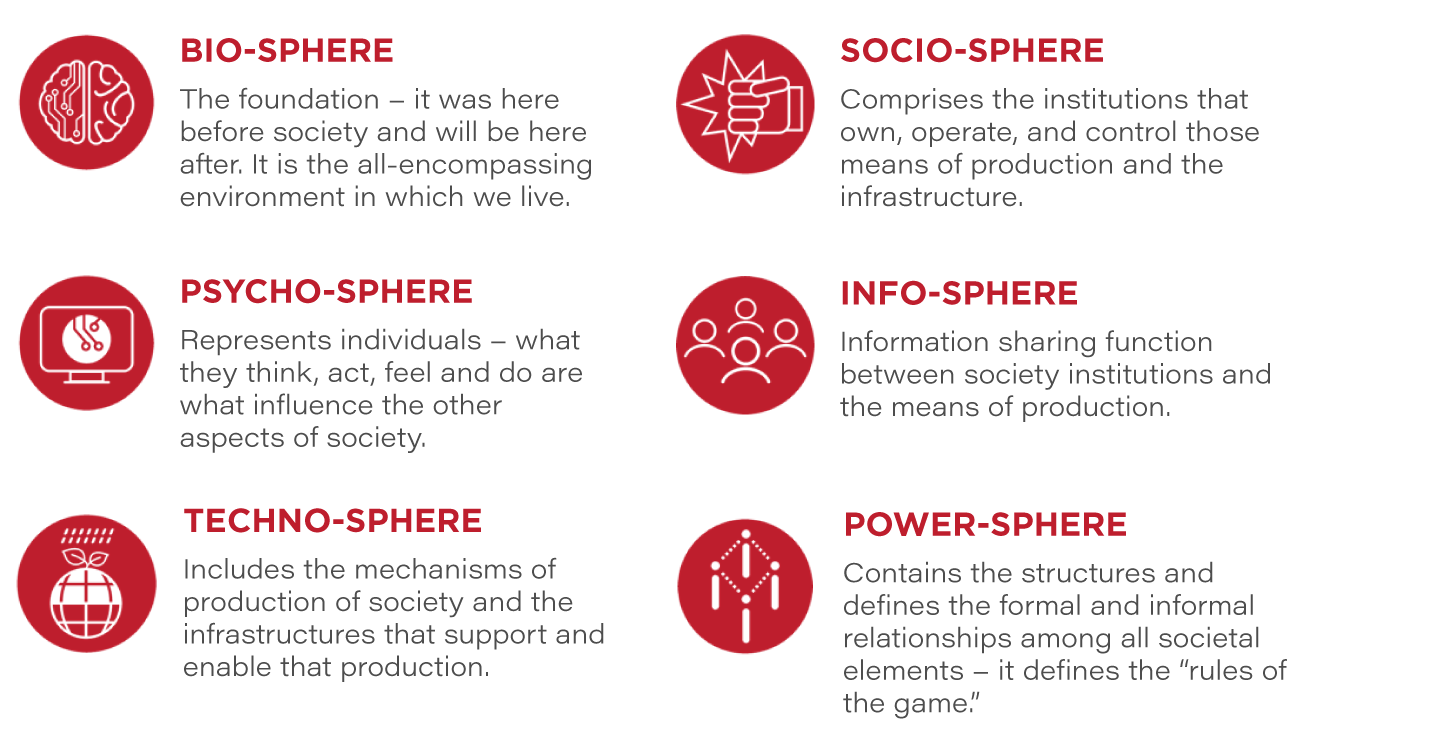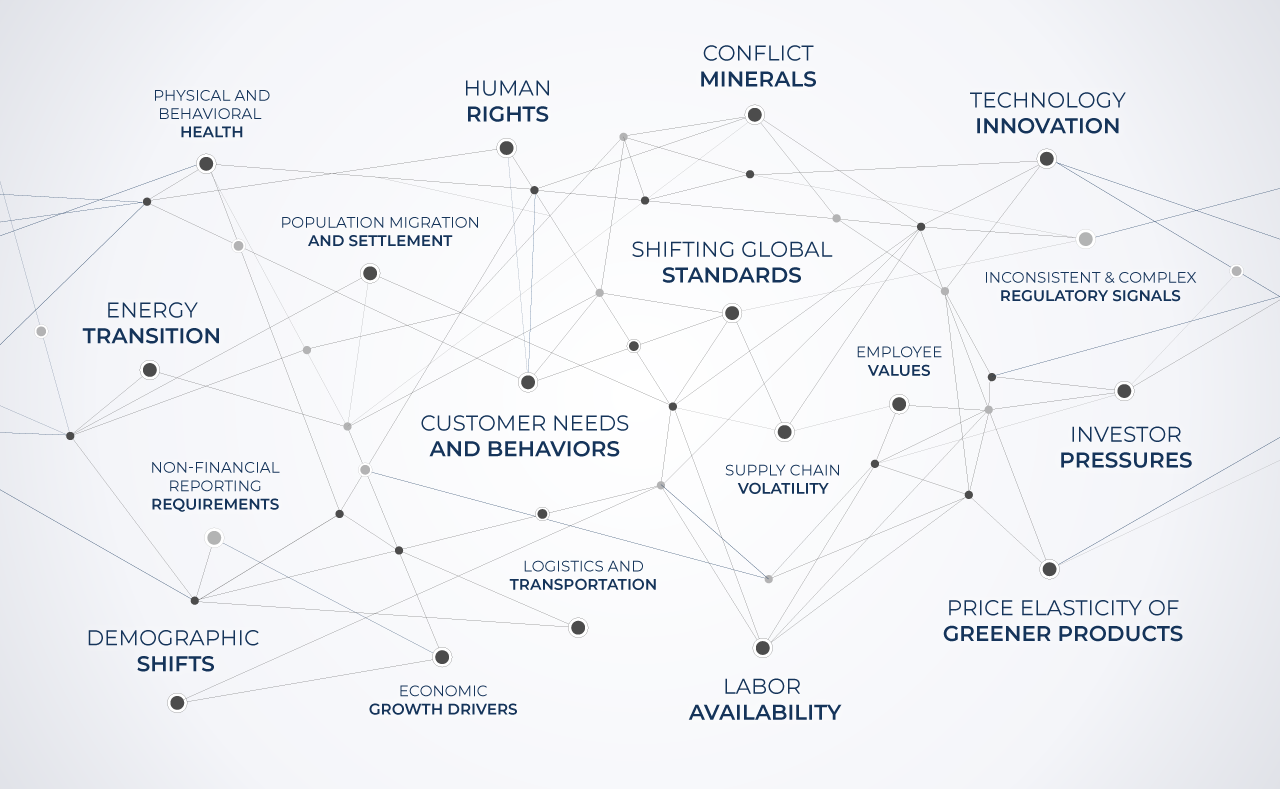Climate Scenario Analysis and TCFD Reporting

As a firm that constantly thinks about and analyzes the future, Toffler Associates finds it helpful to “start in the future” to identify actions to take today to prepare for multiple futures. This letter from the 2030 provides a glimpse into how organizations can use climate scenario planning to proactively address climate impacts even with the significant uncertainties that exist.
A CEO writes from 2030
To Our Constituents,
This is the first year I address this letter to an audience beyond shareholders, and intentionally include customers, employees, supply chain partners, and global citizens within the communities where we operate. We acknowledge that our organizational and business decisions have a ripple effect throughout the world, and we now hold ourselves accountable for understanding the secondary and tertiary implications of those decisions.
Reflecting on a turbulent decade
A decade ago, the COVID-19 pandemic taught us about the stress that uncertainty causes our customers and staff, as well as the unpredictable effects it has on our supply chain and operations. The war in Ukraine brought on more ambiguity regarding globalization, isolationism, shifting geopolitical allegiances, the power shift of the private sector, and the escalation of sanctions. Through the mid-2020s, we experienced extreme climate events with increasing frequency, volatility, and severity, startling unprepared global communities. We repeatedly learned that we cannot prevent unforeseen incidents from occurring. We can only train leaders to respond differently and more effectively and choose the best investments for risk reduction.
Amid this turbulence, we began to experience increased pressure from our shareholders, who wanted us to disclose the impacts of climate change on our business. Our customers and employees demanded we focus increased attention on environmental, social, and governance (ESG) investments and accountability. Regulatory pressure was not far behind: both the Securities and Exchange Commission (SEC) and Task Force on Climate-Related Financial Disclosure (TCFD) required us to report on our company’s:
- Physical Risks, changes in the acute weather pattern and general climate that have a negative impact on the business’s financial outcomes and
- Transitional Risks, changes in the regulatory, investment, or customer environment that arise from the transition to a lower-carbon economy.
The TCFD Framework provides strategic clarity
Our response to TCFD required us to understand future climate implications, articulate governance structure-related risks and opportunities, refine our business strategy, develop climate risk management plans, and commit to carbon-reduction metrics and targets.
In seeking to comply with regulations and respond to stakeholder demands, we quickly realized our company faced a multitude of climate-related variables: Complex Regulatory Signals. Demographic Shifts. Labor Availability. Price Elasticity. Consumer Needs and Behaviors. Supply Chain Volatility. These were only the first challenges we named. The implications were overwhelming. How could any company make sound business and climate-sustaining decisions in this uncertain environment?
TCFD climate scenario planning helped us thrive
We attribute our ability to adapt and thrive during the turbulent 2020s to a series of climate scenario planning exercises our executive team undertook in 2022. We followed the TCFD’s guidance to use climate scenario analysis to develop a climate resilience strategy. These exercises transformed our thinking from paralysis driven by uncertainty to embracing variability. Using Alvin Toffler’s six spheres as a framework, we followed forces today to their 2040 extremes to create hypothetical yet plausible worlds.

Rather than focusing solely on extreme climate events or different models of degree change, our broad, outside-in lens explored, among other ideas:
- human migration
- agricultural technology and its geographic implications
- clean energy generation and clean tech
- employee protection laws and
- consumer behaviors and expectations
Looking across the worlds we created, we identified what was common across them. Knowing that those common features were more likely to happen, we were able to create a resilient climate strategy, understanding the tradeoffs of our decisions, so we could take action to reduce carbon and meet stakeholder needs.
Aligning leadership was key to climate progress
Starting this process with the executive team meant that leadership had to align first. This alignment helped build support and engagement throughout the organization. We sent a strong message company-wide about the long-term importance of climate-wise decisions, even if those decisions defied short-term profitability goals. As we continued scenario planning exercises, we gleaned insight from operational management, technology leadership, supply chain management, supplier and customer representation, executive leadership, and our board. These diverse perspectives gave us the confidence to uncover biases and blind spots and identify gaps in our business strategy that enabled the value growth we are proud of today.
Sustainable investments made us resilient
With more incentive to invest in clean energy technology, we used pilots and then full implementations to demonstrate what was possible. These investments influenced the public’s perception of our brand’s role as a global citizen, hardened operational infrastructure, and created support systems for employees and customers. We not only protected our brand and the trust we had with employees, suppliers, and customers but also enhanced it. We found leadership was better prepared for long-term and crisis decision-making while considering the second- and third-order effects of those decisions. Our global operations were more resilient and more sustainable.
One unanticipated result: the shift in customer and brand loyalty. The government and other institutions had endured a trust recession over the preceding decade. When we announced our climate response to the public in 2022, we saw anticipation and apprehension rise. Then, as we communicated results, trust also rose. The shareholders, employees, customers, and the public tested us over the last decade to be accountable for our assertions and decisions.
I’m honored by the results and thank you for keeping us true to our word. As global citizens, we will only solve this climate challenge by working together and striving to tackle these tough issues with a greater goal in mind – the future of humanity on earth.
Sincerely,
Hope Shifts, CEO and Chairperson
To learn more about how scenario planning can help your organization identify, understand, and prepare for climate uncertainty or TCFD Climate Scenario Analysis, contact us.



 About the Authors
About the Authors